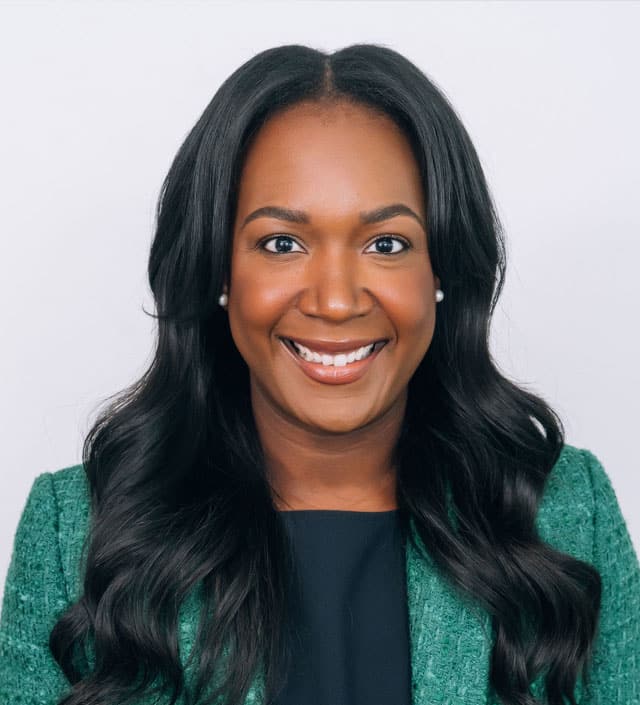Editor’s Note: The United States has an estimated 3,000 to 6,000 family offices, according to “The 2023 Global Family Office Compensation Benchmark Report” from KPMG Private Enterprise and Agreus. U.S. family offices surveyed said their purpose is administration of family wealth (29%), creation of risk-adjusted growth (26%), wealth preservation (28%) and philanthropic initiative (18%). To learn more about their needs and the dynamics of working with family offices, Rethinking65 spoke with Lauren Vick Burthey, a director in the Family Office division of Atlanta-based RIA firm Homrich Berg. Until recently, she advised UHNW clients at J.P. Morgan Private Bank. Family office clients represent over one-third of Homrich Berg’s $14 billion in assets under management. Its Family Office division serves a wide range of client sizes, with a minimum of $25 million of AUM.
Jerilyn Klein: Congratulations on your new position, Lauren. It sounds really exciting!
Lauren Vick Burthey: Thank you.
Klein: What are the top investment and tax challenges facing family office clients and are you seeing any new trends?
Burthey: It’s been a really interesting time in the investment landscape. We’ve gone through a decade or so of very low yields, and now we’re shifting into a space where bonds are appealing again. And so, everyone is reevaluating their positioning to include more municipals and Treasurys; they’re no longer persona non grata in the portfolio and so you’re able to take a little less risk and still achieve the yields that you’re aiming for.
We also continue to see a rise in the interest of private investments, whether private equity, private debt, venture capital, hedge funds, etc. That’s something Homrich Berg has focused on for a long time. One of the reasons I was attracted to HB was knowing that this is an area that’s unique, and that our access to some of the more niche middle-market deals could be of potential interest to new clients.
On the tax side of things, there’s a big focus on the potential expiration of the Trump tax cuts, expected to sunset at the end of 2025. Because of the expectation for the estate-tax exemption [$12.92 million in 2023] to significantly come down, folks are prioritizing the planning aspect. It’s challenging for a lot of clients to talk about planning because it makes people face their mortality. But now things that they’ve put off for a long time, they want to bring forward. If they haven’t already got counsel working on that, a lot of our clients are saying, “Hey, is this something I should be thinking about and is there someone that I should talk to about it?”
It’s really great that we have a colleague on the team here, Abbey Flaum, who’s a former practicing attorney in the T&E [trusts and estates] space. She can opine with our clients on some of these aspects and either look at their existing planning or raise some new potential ideas around that.
Klein: Are clients focused on any particular tax-protection strategies?
Burthey: Spousal lifetime access trusts — which allow you to transfer ownership of an asset to a trust but allow your spouse to benefit or use, for example, a home — and GRATs [grantor retained annuity trusts], revocable and irrevocable trusts, continue to be great tools for our clients to transfer assets in anticipation of the tax exemption coming down. It really depends on your balance sheet and what your intentions for your wealth are.
Klein: What is the typical age range of the heads of the family offices you’ve worked with? And do they tend to keep leading, or staying actively involved, in the family offices past traditional retirement age of 65?
Burthey: In most cases, we’re working with the wealth creator (Generation 1), so not quite retirement age, but perhaps approaching. And we’re helping them think through succession planning and ways to ramp down from a very hands on/active role to a more passive/advisory capacity — for example, in the case of a family business, from CEO to chairperson. The services we provide as an outsourced single-family office or family CFO support them through these transitions and help to ensure the intent for the wealth is accurately expressed and exercised through their planning (e.g., drafting of letter of wishes, wills, trusts, etc.). For some wealth creators, that is staying engaged in investment decisions or charitable giving, and for others, it is passing the reigns to the next generation with voting rights.
Klein: What is needed to get younger family members successfully involved in leadership roles in a family office and to make intergenerational wealth transfer successful? How do you help clients with those types of issues?
Burthey: Here at HB, and throughout my career in this space, we believe it’s incredibly important to engage children and the next generation as early as possible. Ultimately, values are caught not taught. It’s important for whomever you expect to inherit the wealth, or be a steward of the capital, to understand what your values are by seeing you [the family leader] live them. We spend a lot of time getting clients to recognize that their behavior is what’s actually teaching their kids on a daily basis — not these annual or quarterly conversations around what to do with the wealth.
One really common approach to get children engaged is around philanthropy and charitable giving. That can get people excited, especially when they feel like they haven’t necessarily had an opportunity to be a steward of the wealth and the capital. They can express themselves and the way in which they want to help the world or their communities.
I’ve also been part of conferences in which we’ve brought together the next generation. Oftentimes next-gen members operate in silos and have no idea of the capacity or the magnitude of wealth that their families have. If you’re able to introduce them to not only their family situation and bring them up to speed, in a gradual and thoughtful process, but also surround them with similarly situated families, it can be really helpful. They can have conversations about what worked, what hasn’t worked, and ways to bridge the gap.
Klein: From what you’ve observed, do family leaders tend to hand over their wealth and businesses to their children at a younger age or wait until the children are older?
Burthey: The principal wealth creator and their experience will typically color how they approach the communications. For example, if you have a family business and the children are involved, they probably have a closer view and a more realistic understanding of the business. If the wealth has been inherited, then you’re going to have a different perception of involvement and engagement, and it may come in the form of charitable giving.
There are some clients who feel that, “It’s my wealth and I want to ensure my kids are equipped to be independent contributors to society. I don’t want to leave so much wealth to them that will debilitate them or somehow inhibit them from being independently successful.” It also depends on the children’s personalities and the relationships that they have.
Some of our clients have had conversations with children as young as 5 or 6 to help them start to understand savings and investing. I’ve had clients and colleagues who, instead of giving elaborate gifts, encouraged their children to invest and taught them about investing as early as when they started to get an allowance. It really depends on the child’s interests, as well as the principal’s expectations and values.
Klein: Any other tips on what does and doesn’t work with getting families together? And can you share a particular family situation?
Burthey: Family meeting are very important. And while holidays can seem like a prime time because everyone’s together, you don’t want to potentially ruin your Thanksgiving or Christmas dinner by having your family meeting around the dinner table.
With family meetings, make sure you have agendas; give family members time to review them and contribute agenda items. Giving a voice to children and the broader family sooner rather than later affords an opportunity for engagement and not feeling like the matriarch or patriarch are running any sort of — I once had a [next gen] client who referred to their experience as “a dictatorship” as opposed to a democracy
Although this comment was made in jest, being able to say it out loud, in front of an advisor, was this family member’s way of asking for help. I wanted to ensure that this person felt heard and that we could create a safe space where they felt like they were able to express what was important to them. From an advisor perspective, it was a good way to lean in and ask specifically how they wanted to be engaged. When multi-generations are involved, I like bringing a team of multiple advisors so that the next generation doesn’t always feel like they’re working with mom or dad’s advisor. They can establish their own rapport with the person they feel most comfortable with.
Klein: Have you helped families whose members have sharply contrasting political views, and how can families put politics aside?
Burthey: It happens all the time. Often people perceive that it happens with one generation to the next, but it can also sometimes happen between spouses. Personal beliefs often come into play around charitable gifts, and the rise of ESG has really given people an opportunity to express their political views with their investment dollars.
Our general approach is to encourage people to realize that politics and investments don’t need to intersect as much as one may think. While you can vote with your feet or your dollars, there are ways and spaces to keep them separate [if desired.] Just like with charitable giving, you can sort off portions of the balance sheet so that everyone feels like they have their own respective money to work with, through which they can express their values. But you can also do it in a different way, whether through charity or community work. Investments don’t have to be the place where you express those different views.
Klein: How can financial advisors who aren’t in a family office offer family-office-type services for their wealthier clients? And when is it time for a family to create a family office?
Burthey: When you’re in the wealth creation stage, the more your balance sheet grows, there’s an inverse relationship between that growth and the time and capacity that you have to dedicate to it. So, you start to look to outsource [through a single or multi-family office]. Here at HB, we’ve built our family-office services to provide what we would call the key services for a single-family office for those who don’t really have the capacity or want the hassle of creating their own operation.
I would say from $25 million to $500 million you’re thinking about your wealth from a family office perspective — including technology, estate planning, philanthropy. The more complex and the larger your balance sheet is, the more different places you’re getting information from and must keep an eye on. One of the big investments we’ve done here at HB is consolidated reporting technology to let families see everything they have in one place in one dashboard. We were at the forefront of that, about a decade ago.
if you are thinking about catering to a family office client, you want to think about, “What is it that they need that I can offer them, that the size and scale of the organization is able to drive down the pricing on, as opposed to them paying for a group of employees to do that on their own?” A client may not need that entire staff on a day-to-day basis.
Klein: Does having $25 million or $50 million in assets automatically mean clients need a family office?
Burthey: It’s not a bright line as much as it is related to the services needed. If you have $50 million but you are not interested in alternative investments, you’re not interested in charitable/planned giving, then a family office structure may not be for you. It’s really around having more complex needs than it is the dollar amount.
Klein: For an advisor who has one or two clients or prospects who are ultra-high-net-worth —wealthier than the clients they’re used to working with — what should be on their radar?
Burthey: You have to be prepared to handle complex estate and tax planning questions. You have to have a network of counsel and advisors to refer these clients to, to have relationships with and be able to ensure that they will be taken care of and their needs will be met. And from an investment perspective, your typical family office client isn’t looking just to beat the benchmark or isn’t looking to just invest in the S&P 500. They are looking for something a little more unique; if they’ve been successful in building something, oftentimes they want to replicate that type of success.
So, you have to understand the level of service that type of client is used to and be able to provide that to them. I’ve worked with what I refer to as institutional families, endowments and foundations in my career, and being able to say, “I have worked with families like yours, organizations like yours, and I understand the challenges that they face,” lends a lot of credibility and also empowers you as an advisor to advise them, I would say more efficiently.
Klein: When you said these clients often want to replicate their success, do you mean financially, or also in a leadership capacity?
Burthey: A successful entrepreneur is, very rarely, a one-time entrepreneur. If you have built a business and it’s been successful, you’ve been bitten by that bug and you may want to do it again. Those types of clients often like to also invest in what they know. For example, if you are a consumer products specialist or entrepreneur, you may feel excited and get jazzed up about investing in burgeoning consumer product companies. You’re also used to controlling the outcome of those investments. If you’re a business owner, you’re used to touching and feeling the product and having very high influence on the outcome. This is going to be an adjustment, if you’re now investing in things that you’re not as closely tied to or can’t influence.
So those types of conversations around adjusting expectations around return, or helping them understand how to hedge against their exposure, are important. If you know the majority of their wealth is in their business, [you might consider saying], “Maybe you don’t want to invest in something in the same industry.” Do they want to replicate what they’ve done in their business and do that in another business, or do they want to diversify?
Portfolio diversification is something that is really core to working with ultra-successful high-net-worth folks — making sure that there’s not an over concentration of investment in a particular area to ensure that their wealth has an opportunity to grow and in different types of economic cycles.
Klein: I’ve read that Homrich Berg had been rapidly expanding. What are some of the firm’s goals? And what are your goals in your new position?
Burthey: I personally am not involved in the M&A side of the firm strategy, but HB’s expansion is one of the reasons that attracted me to them. While they’ve done some growth with acquisitions, I would say the primary focus on the growth is organic. Client family referrals is a large focus and I think if you deliver great service to clients, they will refer others that they care about. And the reason we want to grow, is because the bigger we are, the more we can use that scale, in technology and talent, to improve how we serve our clients and our offerings, and push down certain costs for clients.
I really enjoy serving clients and being an advisor to them across all aspects of their balance sheet, and I’m excited to be able to do that now in a fee-only fiduciary seat where they’re paying for our advice and our expertise and not a specific product or solution — a much more holistic-advice driven type of relationship. I’m hoping to continue to learn from families that have successfully transferred wealth from one generation to the next, and to bring those learnings to the clients that I work with. As I said, I think it’s incredibly important to share information and share best practices.
We’re also continuing to develop more content to share with our clients so that they can read and consume knowledge in the way that is appropriate for them, and the way that they digest information and to then be able to have a deeper, more informed conversation with them about the tools at our disposal to achieve their goals.
Jerilyn Klein is editorial director of Rethinking65.com. This conversation has been edited and condensed for clarity and brevity.







